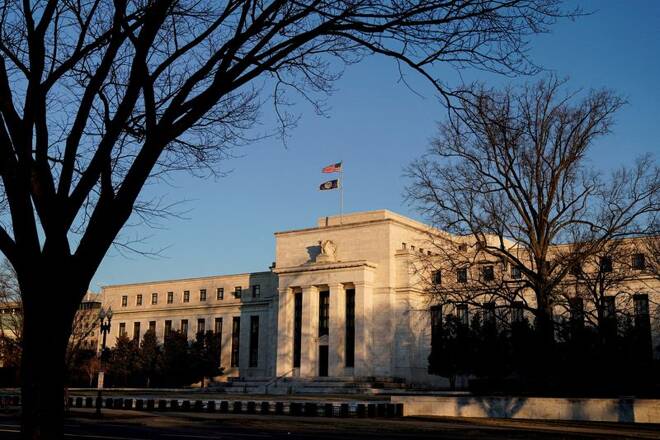Advertisement
Advertisement
NY Fed paper ties reverse repo surge to bank regulation change
By:
By Michael S. Derby (Reuters) - Persistently massive inflows of cash into a key Federal Reserve facility are in large part being driven by a bank liquidity regulation change from last year, a report from the New York Fed said Friday.
(Fixes typo in paragraph 6)
By Michael S. Derby
(Reuters) -Persistently massive inflows of cash into a key Federal Reserve facility are in large part being driven by a bank liquidity regulation change from last year, a report from the New York Fed said Friday.
The Fed’s facility offers what are called reverse repos, which allow eligible firms to park cash at the central bank in exchange for a risk-free return. The rule playing a role in the inflows is a regulation called the Supplementary Leverage Ratio, which determines how much liquidity banks need to have on hand.
The SLR standard was eased during the most acute phase of the coronavirus pandemic in 2020, when fears about market functioning abounded, and it was restored at the end of March 2021, returning to a tighter standard.
“After the SLR relief period ended, banks had less flexibility to expand their balance sheets by increasing their holdings of reserves and Treasuries,” wrote bank economists Gara Afonso, Marco Cipriani, and Gabriele La Spada. That had a knock-on effect on money market funds, the main user of reverse repos, which surged cash into the reverse repo facility.
After the regulation change banks were less inclined to take deposits, and that cash instead flowed to the money funds, which had to invest that money somewhere, the paper said. Meanwhile, banks reduced short-term debt offerings, constraining what money funds could invest in. And on top of that, Fed rate hikes further drove cash into money market funds as financial markets navigated a shift in the cost of short-term borrowing, according to the authors.
The Fed’s reverse repo facility is a key part of the toolkit it uses to manage the setting of its federal funds rate target, which it uses to influence the path of the economy to achieve its inflation and job goals. The reverse repo tool offers money market funds and other firms a place to park cash at the Fed overnight and earn a return. It’s currently at 3.8% and is a better-yielding investment than many private securities that come with more risk.
The Fed’s reverse repo facility was largely unused into the spring of 2021 and then inflows steadily ramped up. Inflows peaked at $2.426 trillion at the end of September before easing slightly to Friday’s inflow of $2.05 trillion.
Fed officials have been sanguine by the massive levels of inflows. Some have made the case that as the Fed raises rates and reduces the size of its balance sheet to combat high inflation, inflows to the reverse repo facility should decline over time. Thus far it hasn’t really happened, however.
Meanwhile, issues around the right setting for the SLR are under consideration by financial authorities, who are treading cautiously on the issue. “History shows the deep costs to society when bank capital is inadequate, and thus how urgent it is for the Federal Reserve to get capital regulation right,” said Michael Barr, the Fed’s point man on bank oversight, in comments Thursday.
(Reporting by Michael S. Derby; Editing by Andrea Ricci)
About the Author
Reuterscontributor
Reuters, the news and media division of Thomson Reuters, is the world’s largest international multimedia news provider reaching more than one billion people every day. Reuters provides trusted business, financial, national, and international news to professionals via Thomson Reuters desktops, the world's media organizations, and directly to consumers at Reuters.com and via Reuters TV. Learn more about Thomson Reuters products:
Advertisement
